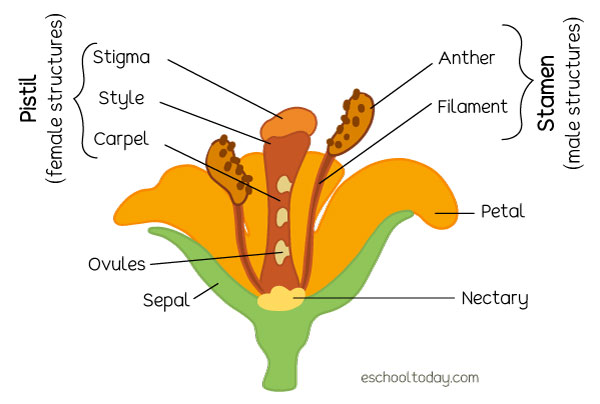- Pollination
The parts of the flower involved with pollination.
If you look at the different flowers in your flower garden or flowers in the fields, it will be obvious that they are all not the same. But inside the flowers, the structures and functions are very similar. That means even though flowers come in very different colors, sizes, and shapes, they all have very similar tools that do a similar job of pollination. For this reason, we will look at a very simple flower, with its parts and functions.

There are two major parts of the flower’s sexual structures.
The Stamen (male part)
The stamen is made up of the anther and filament. The anther holds the pollen grains containing the male cells or gametes. The filament supports the anther and holds it up for it to be released to pollinators.
The Pistil (female part)
That is made up of the stigma, style, and carpel. The stigma is the part that receives the male cell (pollen). The style is the neck and supports the stigma. The carpel is the part of the chamber (ovaries) that holds the ovules (female cells). The ovules contain the female cells.
The petal, nectary, and sepal are also important parts of the flower. The petals are usually the brightly colored parts of the flower that attract the pollinators. The nectary has tissues that produce sugar-rich nectar. They all work together to ensure that insects and other nectar-gathering organisms will receive pollen from the anthers. The sepals protect the developing bud before it opens up into the flower.
Next, we will look at what happens during this mutual relationship between pollinators and flowers.
